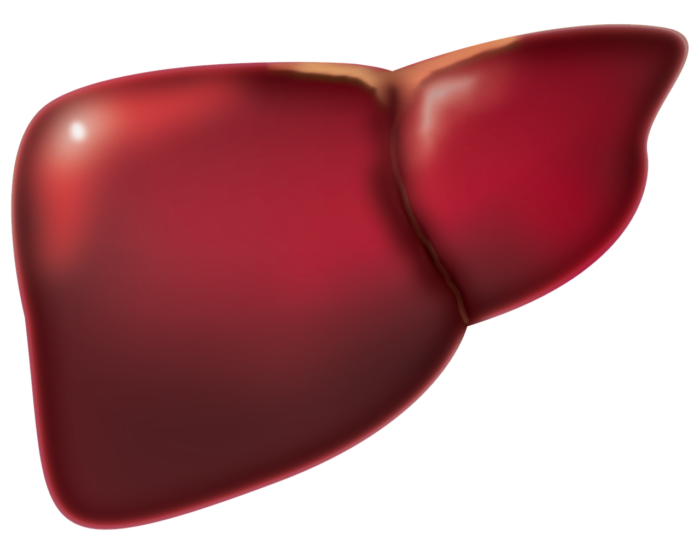
The liver is the most complex organ of external secretion, having the highest temperature (about 39 degrees) and working as a huge chemical laboratory, performing a number of important functions. The liver is located in the upper part of the abdominal cavity, has certain anatomical zones (segments, lobes, sectors) and is one of the largest organs of the gastrointestinal tract.
An incredible feature is that not only what we eat and drink, but even what was applied to the skin or inhaled through the respiratory organs enters the liver through certain vessels. It is then converted into vital components and detoxified.
The liver is also involved in the metabolism of proteins, fats, carbohydrates, vitamins and trace elements. Another important function is detoxification. It has several stages, and its result is the neutralization of foreign substances, poisons, toxins, allergens and our biologically active substances (for example, hormones).
What are the symptoms of liver problems?
Pain in the right hypochondrium
Unfortunately, pain in this area does not always reflect a problem with the liver. The liver itself “does not hurt.” At least until the moment of its strong increase in size, when its capsule (shell) is stretched. Most often, the gallbladder can hurt in this area (in case of inflammation, delayed excretion of bile, and the presence of stones), or the stomach and the duodenum.
Enlargement of the abdomen
Of course, this symptom can also manifest itself in obesity and other diseases of the gastrointestinal tract, but if the patient abuses alcohol, does not have a balanced diet, and the stomach becomes stretched like a ball, most likely, this may indicate a change in the liver.
Strengthening of the vascular pattern on the skin of the abdomen
This transformation is called caput medusae (jellyfish head). Of course, this can be a sign of thinning of the skin, but most often, it is still a sign of the possible presence of a liver disease.
Yellowing of the sclera and skin
These manifestations are a clear sign of liver and gallbladder disease, the presence of a genetic condition called Gilbert’s syndrome, as well as a sharp and acute blockage of the outflow of bile. You should immediately consult a doctor.
Itchy skin
Of course, there are a lot of diseases and conditions associated with the presence of itching of the skin, but this is precisely what a competent doctor, or even a council of doctors, will have to understand in order to say whether this refers to a liver disorder.
In case of liver and biliary system diseases, itching can be associated not only with the “poisoning” of the body with bile and toxins, but also with insufficient function of the formation and absorption of fats (fat metabolism), which leads to severe dry skin.
Feeling of bitterness in the mouth
Yes, this is also a sign of a malfunction in the gastrointestinal tract and the bile outflow system, which is characterized by the reflux of contents from the small intestine into the stomach and further up into the esophagus.
Changes in tests
Since the liver is an organ involved in all metabolic processes, when examining blood tests, changes in biochemical parameters can be observed, reflecting protein, fat, carbohydrate metabolism, immunity, blood coagulation, hormones, and many others, which, in certain combinations, give a clear picture of liver problems.
Frequent bruising, vascular fragility
With these manifestations, it is also worth paying attention to the work of the hepatobiliary system if the appearance of hematomas began in a person who has not had genetic diseases of the hematopoietic system since childhood.
Persistent asthenia, weakness, chronic fatigue
These signs, unfortunately, are very typical of a modern urbanized person, who lives in constant stress and multitasking. They may be the result of viral load, adrenal dysfunction, the presence of a large number of deficiencies and inflammatory processes, but also the presence of liver diseases as well.
Pigmentation disorders on the skin (most often the face and upper body)
These manifestations can be a sign not only of liver pathology but also of the presence of anemic conditions and diseases of the endocrine system, which are actually interconnected and can be combined.
Pigmentation on the skin is represented by bright large spots ranging from gray-yellow to bright brown in color. They can be both symmetrical and asymmetrical, merging or without a tendency to merge. They occur in women more often than in men and cause a lot of aesthetic discomforts.
Xanthelasma
These are flat single and multiple plaques of yellow color, located on the eyelids and ranging in size from a pea to a bean. Xanthelasma is of a soft consistency and tends to merge and form hilly elements.
The development and appearance of these formations are associated with a violation of lipid metabolism, for which the liver is responsible. These formations are harmless and are only of an aesthetic nature. These changes are removed easily and without traces.
The liver is a powerful organ capable of tremendous regeneration, but you should not postpone medical examinations until the manifestation of abnormalities. The most correct approach is a responsible attitude towards oneself and the desire to live to a ripe old age with high quality, with a minimum number of diseases. Therefore, you should find time for healthcare and undergo check-ups at least once a year.
